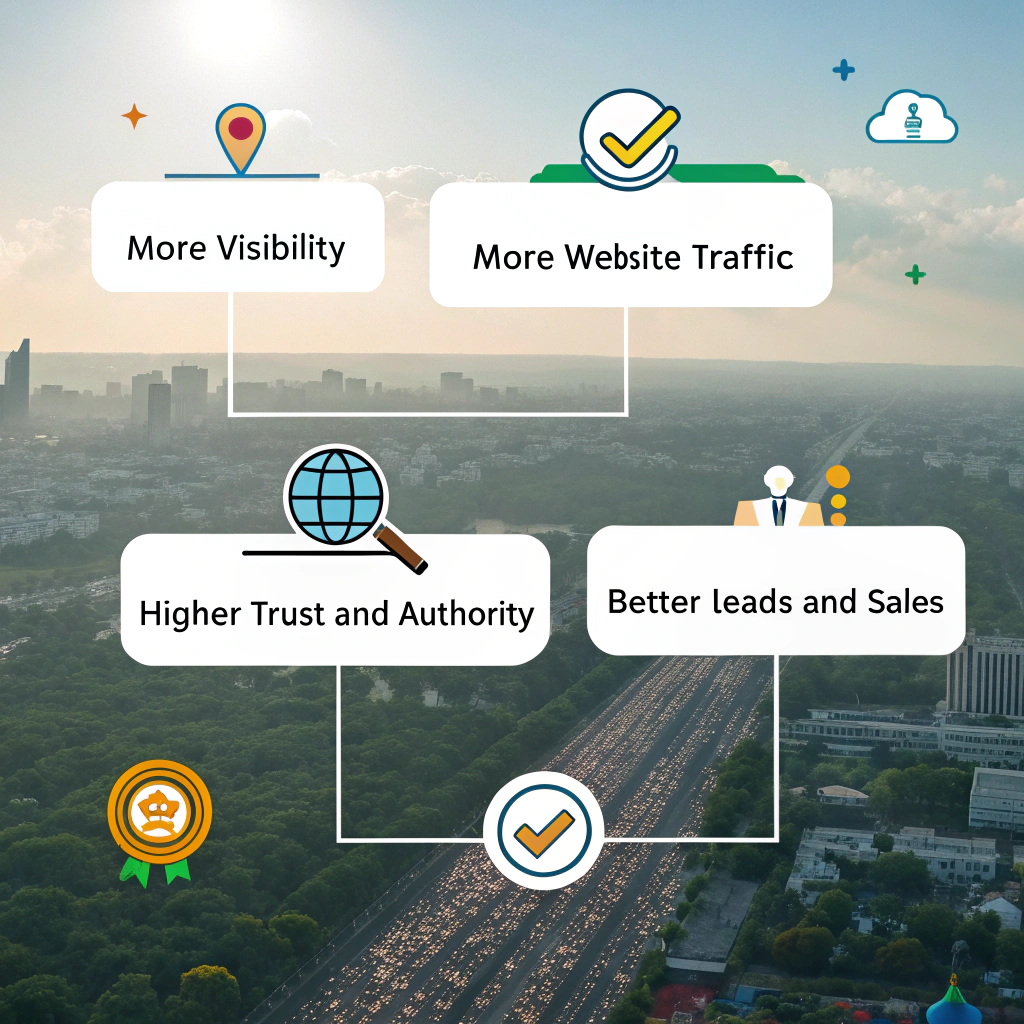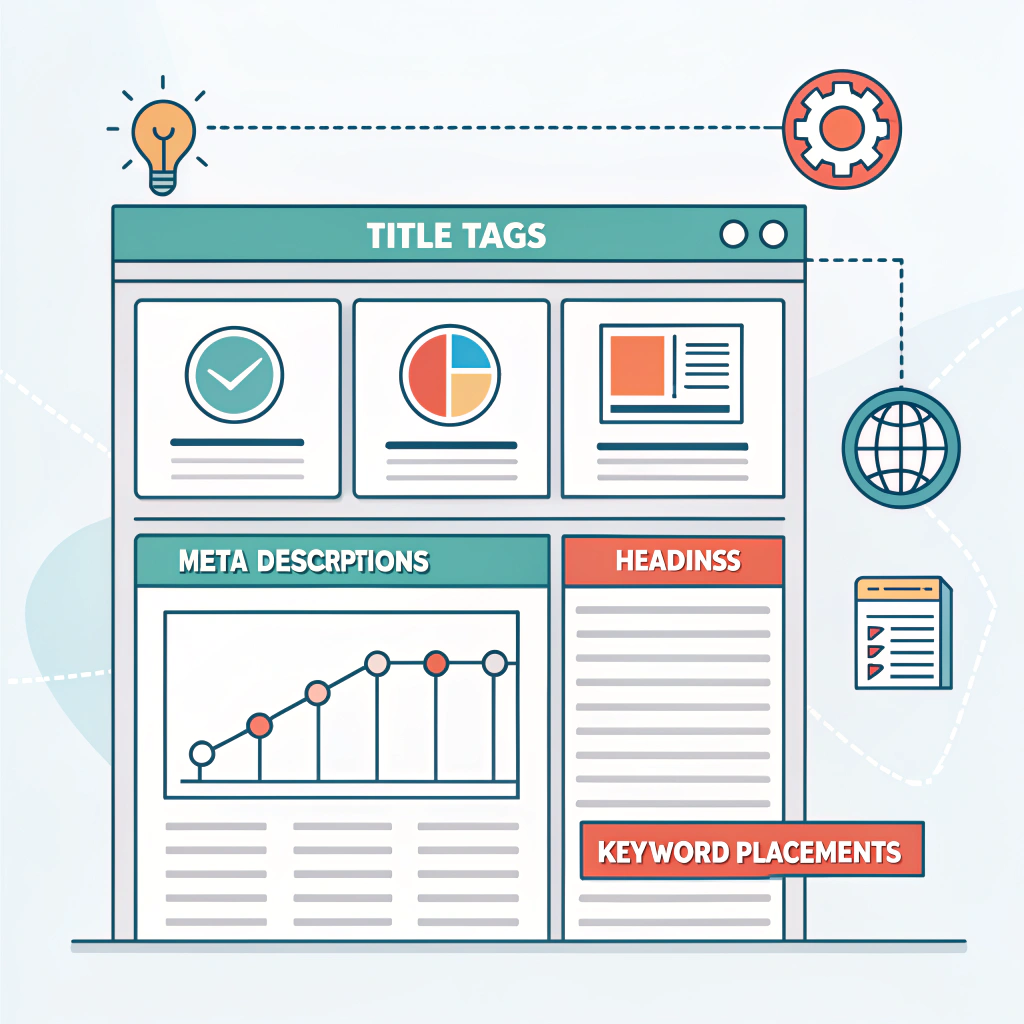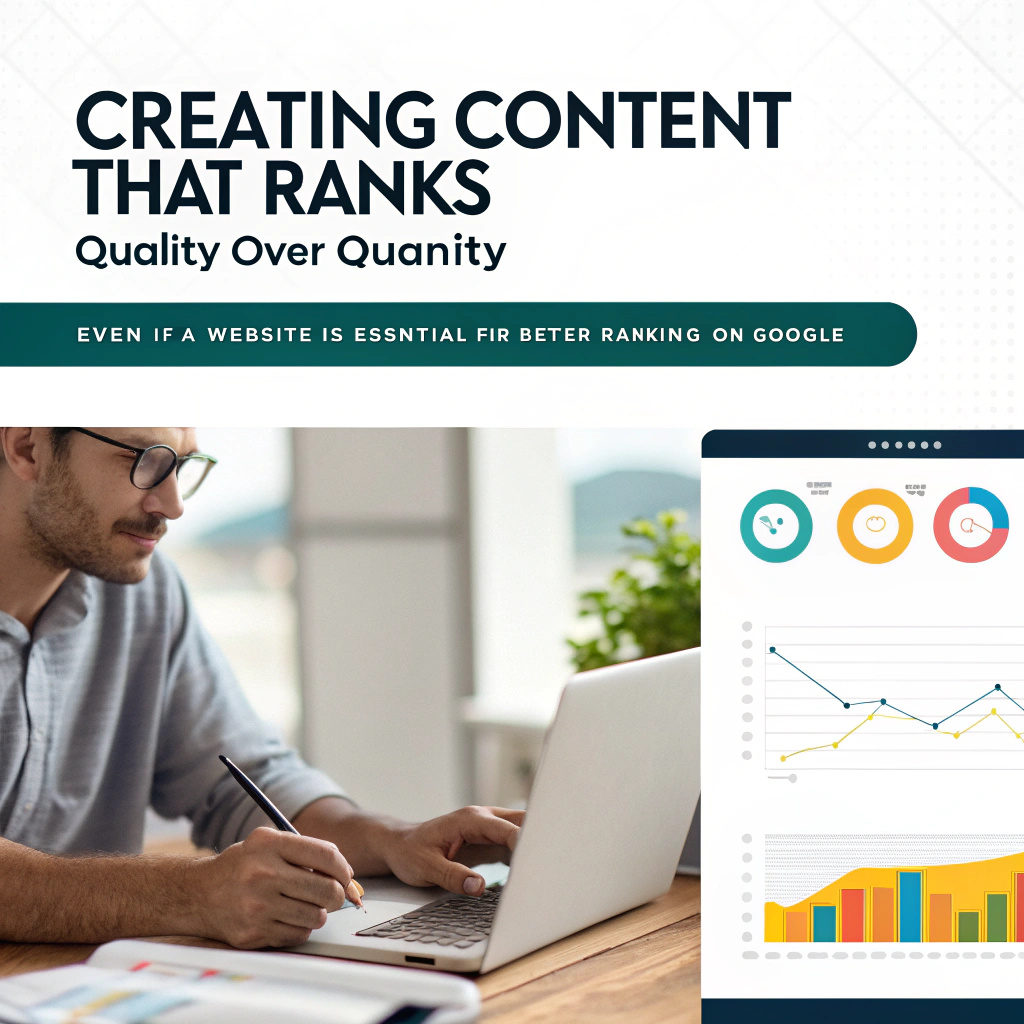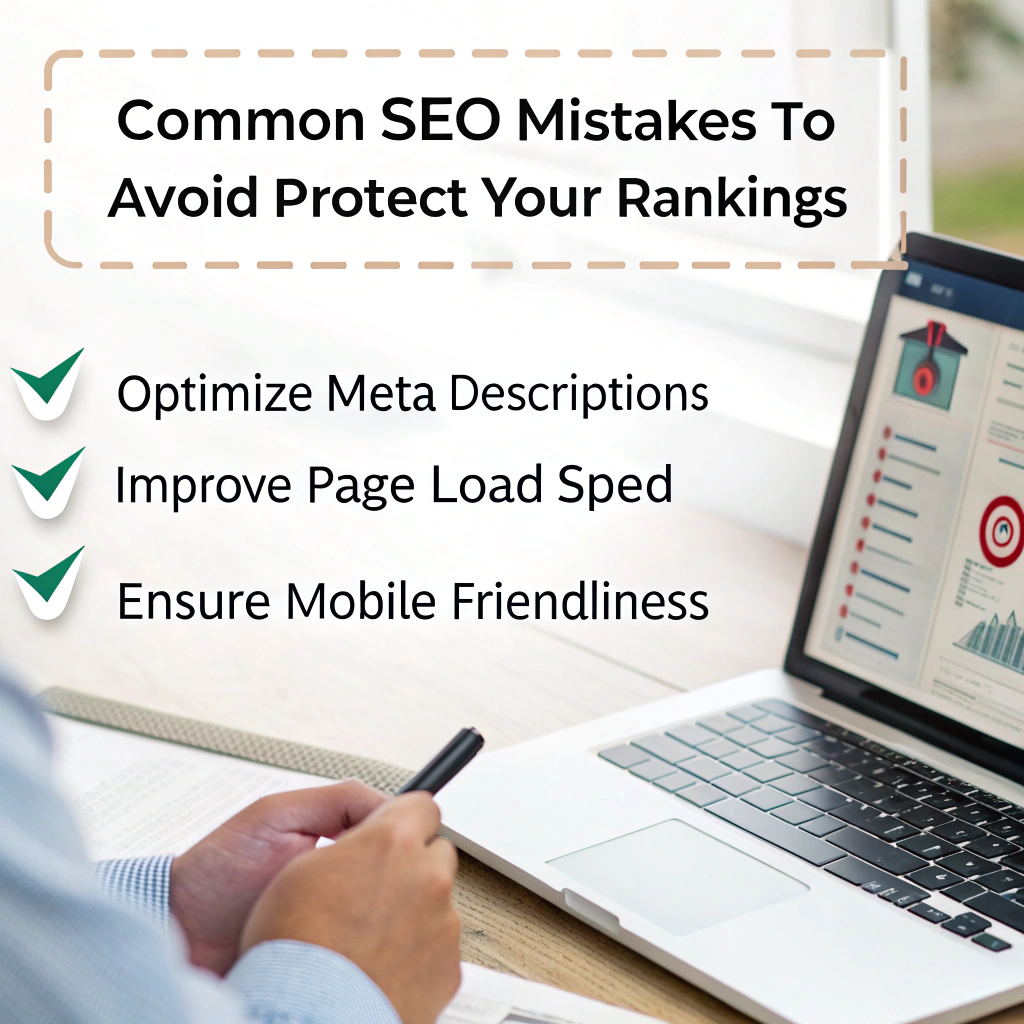Powerful SEO Strategies to Rank #1 on Google

Introduction:
Why Ranking on Google Matters More Than Ever
In 2025, the digital battlefield is fiercer than ever. Millions of businesses compete for a spot on the first page of Google. Why? Because 75% of users never go past the first page. Whether you’re a small business, an educational institute like Cambridge Infotech, or a content creator, getting your site to rank higher on Google means:
More visibility
More website traffic
Higher trust and authority
Better leads and sales
But how exactly do you climb Google’s ranks in this ever-evolving SEO landscape?
This in-depth guide will walk you through every step you need to take to rank higher on Google in 2025. From keyword research to technical SEO and content marketing—this is the only SEO guide you’ll need.
Chapter 1: Understand How Google Ranks Websites
Before we dive into strategies, you must understand how Google works.
Google uses an algorithm called PageRank and other AI-driven systems to evaluate websites based on:
| Ranking Factor | Description |
|---|---|
| Relevance | How well your content matches the user’s search query. |
| Authority | The number and quality of backlinks you get from other sites. |
| User Experience (UX) | How visitors behave on your site (bounce rate, time on site, mobile usability). |
| Technical Structure | Clean URLs, fast load times, mobile responsiveness, and site security. |
| Content Quality | Whether your content is helpful, original, and easy to consume. |
Pro Tip: Google is now prioritizing Helpful Content—content that’s written for humans, not just search engines.
Chapter 2: Start with Smart Keyword Research
The first real step to ranking is understanding what your audience is searching for.
What Is Keyword Research?
Keyword research is the process of finding the exact phrases people type into Google when looking for information, products, or services related to your business.
For example, if you’re offering digital marketing courses at Cambridge Infotech, relevant keywords might be:
“best digital marketing course in Bangalore”
“how to learn SEO for free”
“Google ranking tips for beginners”
How to Do It (Step-by-Step):
Use Tools like:
Google Keyword Planner (Free)
Ubersuggest
SEMrush or Ahrefs (Paid)
AnswerThePublic (for questions-based keywords)
Look for Long-Tail Keywords:
These are keywords with 4+ words, like:
“How to rank higher on Google in 2025”
“Best SEO techniques for education websites”
Check Keyword Metrics:
Volume: How many people search this monthly?
Difficulty: How hard is it to rank for this keyword?
Intent: Is the user looking to buy, learn, or compare?
Analyze Competitors:
Search your target keyword on Google.
See what the top 5 competitors are doing.
Use a tool like Ubersuggest to extract their top-performing keywords.
Example: If you want to rank your course page at Cambridge Infotech, you could use:
Primary keyword: “Diploma in Digital Marketing in Bangalore”
Supporting keywords: “Digital marketing course with internship,” “Google ranking course,” “SEO diploma Bangalore”
Chapter 3: Mastering On-Page SEO – Your Content Starts Here
Once you’ve identified the right keywords, the next step is to optimize your pages for them. On-page SEO involves structuring your content and HTML elements so that Google understands your topic and deems it worthy of a high ranking.
For a website like Cambridge Infotech, this is especially important because you want potential students to find your diploma and course offerings easily.

What Is On-Page SEO?
On-page SEO is the practice of optimizing individual web pages to rank higher and earn more relevant traffic in search engines.
It includes:
Content quality and formatting
HTML tags (title, headers, meta)
Image optimization
URL structure
Internal linking
On-Page SEO Checklist
Here’s a step-by-step checklist to apply on every page or blog post on your site:
1. Use Target Keywords in the Right Places
Your main keyword (like “How to Rank Higher on Google”) should appear in:
The Page Title (
<title>tag)The Meta Description
The URL Slug (e.g.,
cambridgeinfotech.io/how-to-rank-higher-on-google)The H1 Tag (your main headline)
The first 100 words of content
Naturally throughout the body (but don’t overstuff!)
Example:
For a blog post targeting “Best Digital Marketing Course in Bangalore”, the title could be:“Best Digital Marketing Course in Bangalore – Learn SEO, PPC & More | Cambridge Infotech”
2. Optimize Meta Tags
Meta tags are the first impression users and Google get about your page.
Meta Title: Keep it under 60 characters.
Meta Description: Use action-oriented language, include keywords, and keep it under 160 characters.
Example:
Meta Description for a blog:
“Want to rank higher on Google in 2025? Follow this step-by-step SEO guide from Cambridge Infotech and boost your search engine visibility today!”3. Use Header Tags Properly (H1, H2, H3…)
Break your content into sections using heading tags. This improves readability for users and crawlability for search engines.
Use only one H1 tag per page.
Use H2 for main sections.
Use H3 and H4 for subsections.
4. Optimize Your URL Structure
Keep URLs short, descriptive, and keyword-rich.
Good URL:
cambridgeinfotech.io/digital-marketing-diploma
Bad URL:cambridgeinfotech.io/page?id=123455. Add Internal Links
Link to other pages on your site to:
Improve crawlability
Distribute page authority
Keep users on your site longer
Example:
From your blog on Google rankings, link to your SEO course page or Digital Marketing Diploma page.“Want to master these SEO strategies? Check out our Diploma in Digital Marketing at Cambridge Infotech!”
6. Use Optimized Images & Alt Tags
Images help break up content and improve user experience. But search engines can’t “see” images—so use descriptive filenames and alt tags.
Good Alt Tag:
alt="Student learning SEO techniques in Cambridge Infotech classroom"
Bad Alt Tag:alt="image1"Also compress images using tools like TinyPNG or Squoosh to improve page speed.
7. Add a Table of Contents (TOC)
A TOC improves navigation, especially for long-form blogs like this one. It also helps Google understand your page structure and may even earn jump links in search results.
8. Use Schema Markup (Structured Data)
Schema helps Google understand your content better and display rich results.
For example:
Use FAQ Schema for question-based blogs.
Use Course Schema for educational offerings at Cambridge Infotech.
You can generate schema using Google’s Structured Data Markup Helper.
Bonus Tip: Write for Humans First, Google Second
Many people make the mistake of writing only for search engines. That approach doesn’t work anymore. Google now prioritizes content that provides genuine value to real users.
So make your content:
Helpful
Conversational
Easy to scan
Visually appealing (use bullets, short paragraphs, images)
Chapter 4: Technical SEO – The Invisible Foundation of Google Rankings
You’ve nailed keyword research and on-page SEO. Now it’s time to explore Technical SEO, the engine under your website’s hood.
Even if your content is amazing, Google won’t rank it well unless it’s technically sound. Think of Technical SEO as the infrastructure that supports your content and helps search engines crawl, index, and understand your site.
At Cambridge Infotech, applying these technical SEO principles can significantly boost your course pages, blog content, and homepage visibility.
What is Technical SEO?
Technical SEO refers to all the behind-the-scenes enhancements that ensure:
Your site loads fast
Google can crawl your pages
Your website is secure and mobile-friendly
There are no broken links or crawl errors
Your site architecture is SEO-friendly
Let’s break it down step-by-step:
1. Make Sure Your Website is Mobile-Friendly
More than 60% of Google searches now come from mobile devices. Google uses mobile-first indexing, meaning it evaluates your mobile version first.
How to check:
Use Google’s Mobile-Friendly Test Tool
Make sure:
Text is readable without zooming
Navigation is easy on small screens
Buttons are easily tappable
Example: If your course enrollment page isn’t responsive, you could be losing students who visit from smartphones.
2. Boost Your Website Speed
Google considers page speed a ranking factor. A slow website hurts both SEO and user experience.
How to check:
Use GTmetrix
How to improve speed:
Compress images (TinyPNG, ImageOptim)
Minify CSS, JS, and HTML
Use lazy loading for images
Choose fast, reliable hosting
Implement caching plugins (like WP Rocket for WordPress)
Pro Tip: Aim for a loading speed of under 2 seconds.
3. Use HTTPS – Make Your Website Secure
Security is a trust and ranking factor.
Ensure your website uses HTTPS, not HTTP.
You can get free SSL certificates from Let’s Encrypt.
cambridgeinfotech.io should show a secure padlock in the browser bar. If not, set up SSL through your host.
4. Fix Crawl Errors and Broken Links
Google won’t rank pages it can’t access or pages that are broken.
Use:
Google Search Console to find crawl issues
Screaming Frog SEO Spider to crawl your entire site
Ahrefs Site Audit (for deeper issues)
Fix issues like:
404 pages (broken URLs)
Redirect chains (one page redirecting to another and then another)
Duplicate content
5. Create and Submit a Sitemap
A sitemap is like a roadmap for Google to find and index all your pages.
How to create:
Use plugins like Yoast SEO (WordPress) or XML Sitemap Generator
Submit it in Google Search Console under:
Index → Sitemaps → Add sitemap
Tip: Include important pages like your courses, blogs, and contact page.
6. Use a Clean and Logical URL Structure
Your site architecture should be simple and intuitive.
Good:
Bad:
7. Optimize Robots.txt File
This file tells Google which pages to crawl or ignore.
Make sure you’re not accidentally blocking important pages (e.g., course pages or blogs).
Example robots.txt snippet:
8. Use Canonical Tags
If you have similar content on multiple URLs, Google might treat it as duplicate content.
Add a rel=“canonical” tag to tell Google which version is the “original.”
Example:
9. Enable Structured Data for Better Search Results
We already touched on this briefly in Chapter 3, but it’s a key part of Technical SEO.
Using schema markup, you can enhance how your pages appear in Google results.
For Cambridge Infotech, you can use:
Course schema for your diploma offerings
FAQ schema on blog posts
Review schema if students rate your courses
Use Google’s Rich Results Test to preview.
10. Implement Pagination for Long Content
If you have long lists (like course catalogs or blog archives), use proper pagination.
Best practice:
Use <link rel="next"> and <link rel="prev"> to help Google understand the page series.
Final Technical SEO Tips
Use a flat site architecture (every page reachable in 3 clicks)
Add breadcrumbs for easy navigation
Monitor crawl stats in Google Search Console monthly
Regularly audit your website for technical issues
Chapter 5: Creating Content That Ranks – Quality Over Quantity
Your website might be perfectly optimized technically, but without great content, ranking higher on Google will be tough.
Google’s goal is to serve users with the most relevant, helpful, and engaging content for their queries. So, whether you’re running a blog or promoting your digital marketing diploma at Cambridge Infotech, creating valuable content is your top priority.
Why Content Is King in 2025
Google’s algorithms increasingly focus on user experience signals, which means content that:
Satisfies search intent
Answers user questions comprehensively
Is easy to read and visually appealing
Builds trust and authority
1. Understand Search Intent
Every keyword reflects a user’s intent. There are generally four types of search intent:
| Intent Type | Description | Example Keyword |
|---|---|---|
| Informational | User wants to learn or get information | “how to rank higher on Google” |
| Navigational | User wants to find a specific website | “Cambridge Infotech digital marketing” |
| Transactional | User wants to buy or sign up | “digital marketing diploma enrollment” |
| Commercial | User wants to research before buying | “best digital marketing course 2025” |
Make sure your content matches the intent behind your target keyword.
2. Craft Compelling Headlines and Introductions
Your headline is the first thing a user sees in search results, so make it:
Clear and keyword-rich
Attention-grabbing
Promise a solution or benefit
Your introduction should quickly answer:
What the article is about
Why the reader should care
What they will learn
3. Write In-Depth, Comprehensive Content
Google prefers content that fully answers a user’s question.
Aim for long-form content (1500+ words for blogs).
Use subheadings to organize topics.
Include relevant statistics, examples, and data.
Answer related questions and cover related keywords.
Use multimedia like images, videos, and infographics.
Example:
For “How to Rank Higher on Google,” cover everything from keyword research, on-page SEO, technical SEO, backlinks, user experience, and more.
4. Use Clear and Simple Language
Keep your language simple, conversational, and easy to understand.
Avoid jargon unless your audience expects it.
Write short paragraphs and sentences.
Use bullet points and numbered lists.
Make your content scan-friendly.
5. Optimize for Featured Snippets
Featured snippets are those quick answers shown at the top of Google results.
Structure your content to answer questions directly.
Use numbered or bulleted lists.
Include tables or short paragraphs that define or explain.
Example snippet for your blog:
Q: How to rank higher on Google?
A: Focus on keyword research, optimize on-page SEO, improve site speed, build quality backlinks, and ensure great user experience.
6. Regularly Update Your Content
Google values fresh and updated content.
Revisit your blog posts every 3-6 months.
Add new insights, update statistics, and improve readability.
Fix broken links and outdated info.
7. Include Clear Calls to Action (CTAs)
At the end of your blog or page, encourage users to take action:
Enroll in a course at Cambridge Infotech
Download a free SEO checklist
Contact your team for consultation
8. Encourage User Engagement
Google looks at signals like comments, shares, and time spent on page.
Ask questions at the end of posts.
Enable comments or discussion.
Share your posts on social media to increase visibility.
9. Use Multimedia to Enhance Content
Add images, infographics, and videos relevant to your content.
Videos can improve time on page and engagement.
Infographics simplify complex info.
Properly optimized images help with SEO.
10. Promote Your Content
Creating great content is just the start. Promote it through:
Social media channels
Email newsletters
Influencer outreach
Paid ads if budget allows
Example for Cambridge Infotech:
Publish a detailed blog on “How to Rank Higher on Google” linking to your Diploma courses and share it on platforms like LinkedIn, Facebook, and Instagram, targeting students and professionals seeking digital marketing skills.
Chapter 6: Building High-Quality Backlinks — The Backbone of SEO Authority
Even with perfect content and flawless technical SEO, your website won’t rank well on Google without strong backlinks—links from other websites pointing to yours. Backlinks act like votes of confidence in the eyes of search engines, signaling that your site is trustworthy and authoritative.
At Cambridge Infotech, earning backlinks can help your diploma courses and digital marketing content get noticed by more people searching online.
1. What Are Backlinks and Why Do They Matter?
Backlinks are links from other websites to yours.
They tell Google that your site is credible and valuable.
Not all backlinks are equal — quality matters more than quantity.
Sites with strong backlink profiles rank higher for competitive keywords.
2. Types of Backlinks
| Type | Description | Example |
|---|---|---|
| Editorial Links | Natural links in content | A blog mentions Cambridge Infotech courses |
| Guest Post Links | Links from articles you write | Writing SEO posts on industry blogs |
| Business Directories | Listings on niche or local sites | Local education directories |
| Resource Links | Links on resource pages | “Top digital marketing courses” page |
| Social Media Links | Links from social profiles | Facebook, LinkedIn posts linking to site |
3. How to Get High-Quality Backlinks for cambridgeinfotech.io
A. Create Link-Worthy Content
Publish in-depth guides, case studies, and tutorials.
Produce original research or data on digital marketing trends.
Use infographics and videos others want to share.
Example: A comprehensive SEO guide like this one can attract natural backlinks from bloggers, educators, and marketers.
B. Guest Posting on Relevant Sites
Identify blogs or websites related to digital marketing, education, or career development.
Pitch guest posts that provide value and include a link back to your site.
Example: Write an article on “Top Digital Marketing Trends” and link to your Diploma page on Cambridge Infotech.
C. Outreach to Influencers and Bloggers
Reach out to influencers in the education and marketing niche.
Offer to collaborate or provide expert quotes for their content.
Personal relationships can lead to organic backlinks and social shares.
D. List Your Site in Relevant Directories
Submit your website to local business directories.
Join educational and career resource sites.
Make sure directories are credible and niche-specific.
E. Use Broken Link Building
Find broken links on websites in your niche.
Contact site owners suggesting your content as a replacement.
Tools like Ahrefs or Broken Link Checker can help find these opportunities.
4. Avoid Bad Backlink Practices
Never buy backlinks or participate in link schemes.
Avoid spammy directories or irrelevant sites.
Low-quality backlinks can harm your rankings.
5. Monitor Your Backlink Profile
Use tools like Google Search Console, Ahrefs, or Moz.
Disavow spammy or harmful backlinks.
Track new backlinks and analyze their impact.
6. Build Internal Links Alongside External Backlinks
Don’t forget to link internally between your own pages to distribute link equity and help users navigate.
Summary:
Backlinks are powerful votes of trust that elevate your SEO rankings. Focus on creating great content, reaching out strategically, and avoiding shortcuts.
Chapter 7: User Experience (UX) and SEO — How Good Design Boosts Your Google Rankings
SEO isn’t just about keywords and backlinks anymore. Google’s algorithms increasingly reward websites that provide a great user experience (UX). If visitors enjoy your site, stay longer, and interact more, Google will notice — and boost your rankings.
At Cambridge Infotech, creating an engaging, easy-to-navigate website is just as important as writing great content.
1. Why UX Matters for SEO
Google measures behavioral signals like bounce rate, time on site, and pages per session.
A positive UX encourages visitors to stay longer and explore your site.
Poor UX can increase bounce rates and lower rankings.
2. Key UX Elements That Affect SEO
A. Website Speed
Fast-loading pages improve user satisfaction.
Slow sites frustrate users, increasing bounce rates.
See Chapter 4 for technical tips on speed optimization.
B. Mobile Usability
Mobile-friendly design is crucial with mobile-first indexing.
Responsive design adapts to different screen sizes smoothly.
C. Clear Navigation and Site Structure
Simple, logical menus help users find what they need.
Use breadcrumbs to show users their location on the site.
D. Readable and Accessible Content
Use legible fonts and sizes.
Break content into short paragraphs and use headings.
Include alt text for images to aid accessibility.
E. Engaging Visual Design
Use colors, whitespace, and images effectively.
Avoid clutter that overwhelms visitors.
3. Improving User Engagement Metrics
Google looks at:
| Metric | What It Measures | Why It Matters |
|---|---|---|
| Bounce Rate | % of users leaving after one page | High bounce suggests poor relevance |
| Time on Site | How long users stay | Longer time indicates valuable content |
| Pages per Session | Number of pages visited | More pages mean better engagement |
4. Tips to Enhance UX on Your Site
Use clear CTAs guiding users to enroll or contact.
Optimize forms to be simple and fast.
Add live chat or chatbot support.
Make search functionality easy to find and use.
Regularly test your site on different devices and browsers.
5. Use Analytics to Track UX Performance
Google Analytics and Hotjar can show where users drop off.
Use heatmaps to understand how visitors interact with your pages.
Continuously improve based on real user data.
6. Example UX Improvements for Cambridge Infotech
Simplify course enrollment steps.
Add student testimonials with photos.
Make sure blog articles have related post links.
Optimize site for fast mobile browsing.
Summary:
A great user experience keeps visitors happy and signals Google that your site deserves to rank higher. UX and SEO go hand-in-hand.
Chapter 8: Local SEO — Get Found by Students and Clients in Your Area
For educational institutes like Cambridge Infotech, local SEO can be a game changer. When students search for digital marketing courses “near me” or in their city, local SEO ensures you show up right at the top.
1. What is Local SEO?
Local SEO helps businesses appear in local search results and Google Maps for location-based queries.
Example searches:
“Digital marketing course in [Your City]”
“Best diploma course near me”
“SEO training institute nearby”
2. Optimize Your Google Business Profile (GBP)
Claim and verify your Google Business Profile (formerly Google My Business).
Fill out every detail: address, phone, website, hours.
Add photos of your institute, classrooms, and events.
Regularly post updates and respond to reviews.
Use relevant keywords in your business description.
3. Collect and Manage Reviews
Encourage students to leave positive reviews on Google.
Respond professionally and promptly to reviews.
Reviews boost trust and improve local rankings.
4. Use Local Keywords in Your Content
Add city or neighborhood names naturally in titles, headings, and text.
Create location-specific landing pages if you serve multiple areas.
Example:
“Enroll in the Best Digital Marketing Diploma in Mumbai”
5. Get Local Citations and Directory Listings
Ensure your business info is consistent on local directories like Yelp, Justdial, or education-specific portals.
Consistency in Name, Address, Phone Number (NAP) is critical.
6. Optimize for “Near Me” Searches
Include phrases like “near me” or “close to me” in your content and meta descriptions.
Use Google Maps widget on your website.
7. Mobile Optimization for Local Searches
Since many local searches happen on mobile, ensure your site loads fast and navigation is easy on phones.
8. Use Local Structured Data Markup
Add LocalBusiness schema to help search engines understand your location and business type.
Summary:
Local SEO puts Cambridge Infotech on the map—literally. It drives targeted traffic, increases trust, and converts local searches into students.
Chapter 9: Tracking SEO Performance — Measure, Analyze, Improve
Optimizing your website to rank higher on Google isn’t a one-time task. It’s an ongoing process that requires constant monitoring, analysis, and refinement. Using the right tools and metrics lets you understand what’s working and where you need to improve.
At Cambridge Infotech, tracking your SEO progress will help you fine-tune your digital marketing diploma promotion and content strategy effectively.
1. Set Up Google Analytics and Google Search Console
Google Analytics tracks visitor behavior on your website: traffic sources, user engagement, conversions.
Google Search Console shows how your site performs in Google Search: keyword rankings, impressions, clicks, indexing issues.
Make sure both are properly installed and linked.
2. Important SEO Metrics to Track
| Metric | Description | Why It Matters |
|---|---|---|
| Organic Traffic | Number of visitors from search engines | Indicates SEO success |
| Keyword Rankings | Position of your target keywords in search | Tracks progress on ranking goals |
| Click-Through Rate (CTR) | % of users clicking your site from search results | Measures effectiveness of titles & meta descriptions |
| Bounce Rate | % of visitors who leave after viewing one page | High rate signals poor engagement |
| Conversion Rate | % of visitors completing desired actions | Shows SEO impact on business goals |
| Backlinks | Number and quality of inbound links | Reflects authority and trustworthiness |
3. Use Tools to Monitor SEO
Google Analytics and Search Console (free and essential).
Ahrefs, SEMrush, or Moz (paid tools for in-depth analysis).
Ubersuggest (budget-friendly SEO insights).
4. Set SEO Goals and KPIs
Define clear, measurable goals like:
Increase organic traffic by 30% in 6 months.
Rank in top 3 for “digital marketing diploma.”
Improve average session duration by 20%.
Track these KPIs regularly and adjust strategies as needed.
5. Analyze Competitors
Identify your top competitors in Google Search.
Analyze their keywords, backlinks, and content strategy.
Use this data to find gaps and opportunities for your own SEO.
6. Regular SEO Audits
Perform audits every 3-6 months.
Check for broken links, duplicate content, page speed issues.
Update and optimize older content.
7. Use Data to Refine Your SEO Strategy
If certain keywords aren’t ranking, review content quality and backlinks.
Identify pages with high bounce rates and improve UX.
Experiment with meta tags and headlines to improve CTR.
Summary:
Tracking SEO is like having a GPS for your website’s growth. It guides you to where you want to go, highlights obstacles, and helps keep you on the fastest route to ranking success.
Chapter 10: Advanced SEO Techniques — Stay Ahead of the Competition
Ranking higher on Google isn’t just about basics anymore. As the search landscape evolves, you need to leverage cutting-edge SEO tactics to outperform competitors.
At Cambridge Infotech, applying advanced SEO can help you dominate the digital marketing education niche.
1. Implement Schema Markup (Structured Data)
Schema helps search engines understand your content better.
Enables rich snippets like stars, FAQs, events in search results.
Use tools like Google’s Structured Data Markup Helper or plugins if on CMS like WordPress.
Example:
Add schema for your courses (Course schema), reviews (Review schema), FAQs (FAQ schema).
2. Optimize for Voice Search
Voice search queries are more conversational and longer.
Target natural language keywords and questions.
Create FAQ pages addressing common voice queries.
3. Leverage Artificial Intelligence Tools
Use AI-powered SEO tools for keyword research, content generation, and optimization.
AI can help you analyze competitors, generate content briefs, and identify ranking opportunities.
4. Enhance Your Site with Video SEO
Videos boost engagement and time on page.
Optimize video titles, descriptions, and transcripts.
Host videos on YouTube and embed on your site.
5. Focus on E-A-T: Expertise, Authority, Trustworthiness
Google favors content from authoritative, credible sources.
Showcase author bios, credentials, and trust signals.
For Cambridge Infotech, highlight instructors’ experience and student success stories.
6. Use Content Clusters and Pillar Pages
Organize related content around a central “pillar” page.
Improves site structure and helps Google understand topical relevance.
7. Optimize for Mobile-First and Core Web Vitals
Google prioritizes sites with excellent mobile usability.
Core Web Vitals measure loading, interactivity, and visual stability.
Regularly test with Google’s PageSpeed Insights and Search Console.
8. Utilize International SEO if Relevant
If you target global students, use hreflang tags to indicate language and regional targeting.
9. Implement Content Personalization and User Segmentation
Tailor content recommendations based on user behavior and preferences.
Increases engagement and conversions.
10. Keep Up With Google Algorithm Updates
Stay informed about updates like Google’s Helpful Content Update.
Adjust SEO strategies accordingly to maintain rankings.
Summary:
Advanced SEO techniques go beyond the basics to refine your site’s authority, usability, and relevance—crucial for long-term success.
Chapter 11: Common SEO Mistakes to Avoid — Protect Your Rankings
SEO can be complex, and small mistakes can have big impacts. At Cambridge Infotech, avoiding these pitfalls will keep your digital marketing diploma site strong and climbing in Google rankings.
1. Keyword Stuffing
Overusing keywords unnaturally makes content hard to read.
Google can penalize for spammy keyword usage.
Focus on natural, relevant keyword integration.
2. Ignoring Mobile Optimization
More than half of web traffic comes from mobile devices.
Neglecting mobile usability leads to higher bounce rates and lower rankings.
3. Slow Page Loading Times
Users expect fast websites.
Slow loading pages cause visitors to leave and harm rankings.
4. Duplicate Content
Publishing the same content on multiple pages confuses Google.
Use canonical tags and ensure unique content per page.
5. Neglecting Title Tags and Meta Descriptions
Missing or poorly written titles and meta descriptions reduce click-through rates.
Optimize them to be compelling and keyword-relevant.
6. Poor Internal Linking Structure
Without good internal linking, Google may struggle to crawl your site.
Links help distribute page authority and guide visitors.
7. Not Updating or Refreshing Content
Old, outdated content loses relevance.
Regularly update posts and pages to keep them current.
8. Ignoring Analytics and Data
Failing to track SEO performance means missing growth opportunities.
Use Google Analytics and Search Console regularly.
9. Buying Low-Quality Backlinks
Paid or spammy backlinks can lead to penalties.
Build backlinks naturally through quality content and outreach.
10. Overlooking User Experience (UX)
Complex navigation, hard-to-read fonts, or cluttered layouts drive visitors away.
UX and SEO go hand in hand.
Summary:
Avoid these common SEO mistakes to protect your site’s ranking and provide a positive experience for your visitors.
Chapter 12: SEO Trends to Watch in 2025 and Beyond
SEO is not a one-time strategy — it evolves constantly. Staying ahead of the curve means adapting your tactics based on emerging trends and technologies.
Whether you’re promoting a course or scaling your brand at Cambridge Infotech, here’s how to stay SEO-ready for 2025 and beyond.
1. Google’s Helpful Content Update & AI-Focused Algorithms
Google’s algorithm is now focused on human-first content.
Avoid generic, AI-spammy writing — focus on value, depth, and originality.
Your site should showcase real expertise, authority, and trust (E-E-A-T).
2. Rise of Generative AI in Search (Google SGE)
Google’s Search Generative Experience (SGE) is changing how results appear.
AI-generated summaries may reduce organic traffic to traditional blog posts.
Adapt by answering specific questions, optimizing for snippets, and offering unique insights AI can’t replicate.
3. Voice Search & Conversational Queries
More people use voice search via phones and smart devices.
Optimize for natural language queries like “What’s the best course after 10th in Bangalore?”
Include FAQ sections that mimic how people talk.
4. Visual and Video Content Will Lead
Video results are prioritized in search.
Use YouTube SEO, add video schema, and embed videos in your content.
Add infographics, images with alt text, and visual storytelling.
5. Search Intent Optimization > Keywords Alone
Ranking depends more on intent (informational, navigational, transactional) than keyword density.
Structure your content to solve the user’s problem completely — not just include the right words.
6. Zero-Click Searches Are Rising
Many searches now get answered directly in search results (no click needed).
Optimize for Featured Snippets, People Also Ask, and Knowledge Panels.
7. Core Web Vitals & User Experience Continue to Matter
Google’s Page Experience signals will remain critical.
Focus on speed, stability, interactivity, and mobile performance.
8. Semantic Search and Topic Authority
Google uses NLP (Natural Language Processing) to understand context.
Build topic clusters and become an authority on niche topics (like “Digital Marketing for Beginners,” “SEO after 10th,” etc.).
9. Localization and Hyper-Personalized Results
Personalization is growing.
Tailor content by region, interest, and user behavior — especially for local SEO.
10. Ethical, Transparent SEO Will Win
Black hat tricks are penalized more strictly.
Google rewards brands with authenticity, transparent content, and clear value to the user.
Conclusion: Future-Proof Your SEO Strategy
Staying on top of trends means not just reacting — but leading. At Cambridge Infotech, building a future-ready SEO strategy means focusing on quality, user intent, performance, and trust.
Final Thoughts
By following this comprehensive guide—from keyword research and technical SEO to UX, local visibility, and advanced strategies—you can steadily climb Google rankings and bring massive value to your audience.
FAQs
1. How long does it take to rank higher on Google?
Answer:
SEO is a long-term strategy. It typically takes 3 to 6 months to start seeing noticeable improvements, depending on your niche, competition, and efforts.
2. What are the top factors that affect Google ranking?
Answer:
The top ranking factors include high-quality content, relevant keywords, backlinks, mobile-friendliness, page speed, and user experience (UX).
3. How can I improve my website’s SEO for free?
Answer:
You can start by:
Optimizing content with the right keywords
Improving site speed
Fixing broken links
Creating quality backlinks
Using Google Search Console and Analytics
4. Is content more important than backlinks in SEO?
Answer:
Both are crucial. Content attracts users and satisfies search intent, while backlinks boost your domain authority. For the best results, combine both.
5. What is the easiest way to get backlinks?
Answer:
Start with guest blogging, creating shareable content, submitting to directories, and collaborating with influencers or educational partners like Cambridge Infotech.
6. Do I need technical SEO for a small business website?
Answer:
Yes. Technical SEO ensures your site is crawlable, fast, and secure, which directly impacts your Google rankings, no matter your business size.
7. How do I know if my SEO is working?
Answer:
Track key metrics like organic traffic, keyword rankings, bounce rate, and conversions using tools like Google Analytics and Search Console.
8. Can I rank on Google without a blog?
Answer:
It’s possible, but much harder. Blogs help target long-tail keywords, answer user questions, and build topical authority, all of which improve rankings.
9. What is the difference between on-page and off-page SEO?
Answer:
On-page SEO involves optimizing elements within your website like content, titles, and meta tags. Off-page SEO refers to actions outside your site, like building backlinks and social signals.
10. How can Cambridge Infotech help me learn SEO?
Answer:
Cambridge Infotech offers a Diploma in Digital Marketing that includes hands-on SEO training, real-world projects, and expert mentorship to help you master Google ranking strategies.
RELATED BLOGS
Best Course After 10th – Diploma in Digital Marketing at Cambridge Infotech (2025)

















